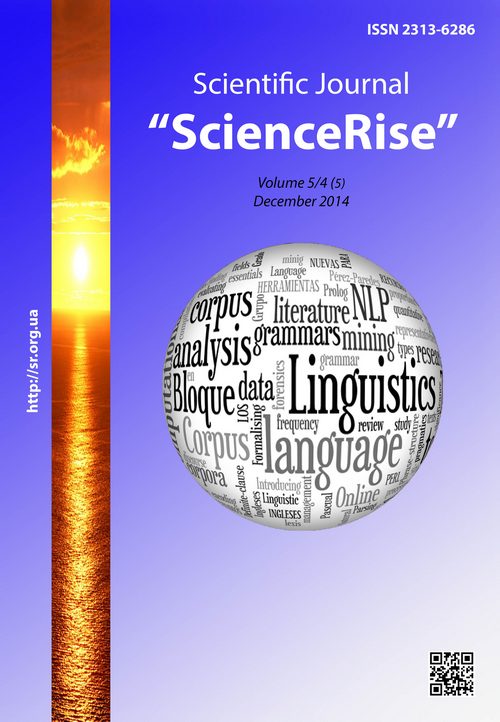The polyvinylpyrrolidone graft copolymers and soft contact lenses on their basis
DOI:
https://doi.org/10.15587/2313-8416.2014.33235Słowa kluczowe:
polyvinylpyrrolidone, 2-hydroxyethyl methacrylate, cross-linked copolymer, hydrogel, permeability, contact lenses, eye traumaAbstrakt
The graft polymerization of 2-hydroxyethyl methacrylate in presence of polyvinylpyrrolidone, which occurs through a stage of complex formation between the reactants, was investigated. The basic performance properties of hydrogel copolymers depending on their composition were investigated. A hydrogel polymeric material “Akrylan-LPI” for soft contact lenses was developed. Clinical testing confirmed the effectiveness of using of such lenses for vision correction as well as for eye injuries and burns treating.
Bibliografia
Pavlyuchenko, V. N, Ivanchev, S. S. (2009). Composite polymeric hydrogels. Vysokomol. Soed., 51 (7A), 1075–1095. [in Russian]
Lippman, J. (1990). Contact lens materials: a critical review. CLAO J., 16, 287–291.
Danilichev, V. F. et. al. (2007). Materials for the manufacture of soft contact lenses // Sovremennaia Optometrija, 4 (4), 6–9. [in Russian]
Woods, D. (2009). Silicone-hydrogel soft contact lenses and continuous wear. Sovremennaia Optometrija, 14 (4), 12–18. [in Russian]
Suberlyak, O. et. al. (2012). Regular trends in synthesis of sorption active copolymers of methacrylic acid esters. Russian Journal of Applied Chemistry, 85 (5), 830–838. doi: 10.1134/s1070427212050254
Skorokhoda, V. et. al. (2013). Peculiarities of filled porous hydrogels production and properties. Chemistry & Chemical Technology, 7 (1), 95–99.
Crassous, G., Jozefowicz, M. (1984). Preparation of an asymmetric semipermeable membrane with anticoagulant activity. Biomaterials, 5 (3), 153–156. doi: 10.1016/0142-9612(84)90050-4
Suberlyak, O. et. al. (2009). Formation and properties of hydrogel membranes based cross-linked copolymers of methacrylates and water-soluble polymers. Engineering of Biomaterials, 86 (12), 5–8.
Key, J., Lebi, Т. (1962). Tables of physical and chemical constants. Moscow, Russia: Gos. Izd. Fiz.-Mat. Litieratury, 248. [in Russian]
Reitlinger, S. (1974). The permeability of the polymeric material. Moscow, Russia: Chimiya, 272. [in Russian]
Dubyaga, V. et. al. (1981). Polymeric membranes. Moscow, Russia: Chimiya, 232. [in Russian]
GOST 15875 (1980). Plastics. Methods for the determination of transmittance coefficient and turbidity. Moscow, Russia: Izd. Standartov, 12. [in Russian]
Skorokhoda, V. (2010) Matrix polymerization of 2-hydroxyethylmethacrylate in the presence of polyvinylpirrolidone in permanent magnetic field. Chemistry & Chemical Technology, 4 (3), 191–196.
##submission.downloads##
Opublikowane
Numer
Dział
Licencja
Copyright (c) 2014 Oleg Suberlyak, Volodymyr Skorokhoda, Nadiya Kozlova, Yuriy Melnyk, Nataliya Semenyuk, Nataliya Chopyk

Utwór dostępny jest na licencji Creative Commons Uznanie autorstwa 4.0 Międzynarodowe.
Our journal abides by the Creative Commons CC BY copyright rights and permissions for open access journals.
Authors, who are published in this journal, agree to the following conditions:
1. The authors reserve the right to authorship of the work and pass the first publication right of this work to the journal under the terms of a Creative Commons CC BY, which allows others to freely distribute the published research with the obligatory reference to the authors of the original work and the first publication of the work in this journal.
2. The authors have the right to conclude separate supplement agreements that relate to non-exclusive work distribution in the form in which it has been published by the journal (for example, to upload the work to the online storage of the journal or publish it as part of a monograph), provided that the reference to the first publication of the work in this journal is included.

